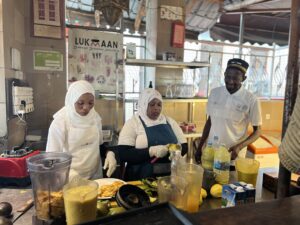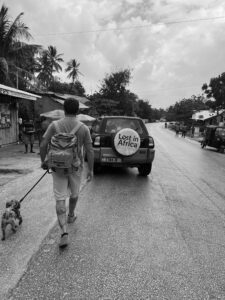When planning an African Safari, it can be overwhelming/intimidating. Africa is a rather large continent with so many countries to choose from, sometimes people get very overwhelmed which country is best. Within your research, I’m sure you will come across the Serengeti National Park, located in Tanzania, East Africa. The Serengeti ranks as Africa’s top safari destinations. With the majority of us being familiar with the world famous national park, and being the home to The Great Migration, it really is no wonder why it continues to rank as Africa’s leading Safari National Park!
The Great Migration is a constant, ever-moving circular migration made up of millions of wildebeests, zebras, antelope & other herbivores in search for fresh food & water across the Serengeti-Maasai Mara ecosystem. It is one of the most sought-after experiences in the world for wildlife & nature enthusiasts. Travelers, photographers travel from all over the globe to witness one of the most fascinating, exhilarating wildlife events.
When does the Great Migration happen?
The great migration is a continual movement, however we like to break it into 2 peaks to make it easy to understand when to plan your trip!

January-March is calving season. The herds of the migration are in in the southern plains of the Serengeti where you actually enter the National Park. The herds of wildebeests & zebras are giving birth in the these plains; The beginning of the circle of life! Nearly 80% of the wildebeests give birth in these southern plains due to the vast, open plains of short grasses giving them better visibility to see if a predator is in the area. Nearly 8,000 wildebeests & zebras are born a day. (Yes, you read this correctly!)Nearly 500,000 are born during this season. The calves are quick to their feet, walking/running with the herds within minutes of entering the world (now how cool is that?! Survival of the fittest!)
You may be able to witness one of the antelope, zebra or wildebeest giving birth or you may see a plethora of babies in the plains; But please bare in mind the predators in the surrounding territories know this is the birthing place. Babies = easy targets.
During the calving season, the grasslands are extremely green & vibrant, everything is in bloom. The landscapes alone are incredibly breathtaking this time of year. You may have a quick, very quick passing shower, but it tends to cool off the lands & the animals tend to become active after a passing shower. So if there is a passing shower in the Serengeti, don’t pack it up and head back to camp just yet! Stick it out, I’m sure you’ll witness some big cats emerge from their hiding spots to enjoy the coolness the shower provided!
Not only will you enjoy plethora of baby antelope, wildebeests, zebras but also plenty of baby predators too! Predators such a lions, cheetah, hyena, leopards, jackals have coincided their mating/birthing times to that of their prey. They understand that their cubs have the highest chance of survival when there is an abundance of food available. It also gives them an excellent chance to learn hunting skills from their elders and to practice themselves on the calves so one day, they can fend for themselves.
Safaris happening during the calving season can really see quite a bit in just a 4-5 day safari. The reason being is that the herds are very far south, so the safari-goers do not have to travel deep into the Serengeti to find the action. This time of year we recommend staying in Ndutu or central Serengeti. you will have the most selections of camps/lodges to choose from, meeting all budgets. From mobile camps, to luxury permanent camps to lodges; you will have no issue finding a place to best fit your needs! We are always watching the paths of the migration and make our best suggestions for our clients where to stay based on the experts predictions.

June/July-October is the Mara River Crossing season, considered to be the main Peak season of the Great Migration. This is when the herds have reached the northern part of the Serengeti on the Kenya border. The herds have to brave the strong currents of the crocodile infested waters of the Mara river, to reach the other side in search for fresh grass; only to be faced with the predators of the Maasai Mara who have long been waiting their arrival. (Lions, leopards, cheetah, hyena, etc). The Mara river crossings are considered to be the highlight of the Great Migration and extremely incredible/special to witness. July-October will be your best chances of witnessing a crossing, however timing it to catch a glimpse of a crossing can be tricky, as they are not guaranteed. There are slight changes every year to the course of the migration based on the rainfall, which does impact the timing of the infamous Mara river crossings. It is crucially important to have a knowledgable guide of the Mara river points and how to navigate the terrain. This part of the Serengeti is far less traveled, in fact, some of the crocodiles in the Mara only eat this one time of year. The paths/terrain are very difficult compared to central Serengeti where you will find resident wildlife all year long.
Due to this section of the Serengeti being less-trafficked/very seasonal, there are very limited camps to choose from. You will find your selection will be from mobile camps (camps that move location from the southern plains to the north) and permanent camps. The permanent camps here tend to be be super luxury.
For most safari tours that include a Mara river crossing; the tour’s last few evenings will be in the Northern plains so some guests will choose to splurge and stay at one of the really luxurious camps for their last 2 nights of safari. Most of our safari tours that include a Mara river crossing, we strongly recommend a 6+ day safari. While you can see plenty in central Serengeti during these months, if a guest wants to try to get a glimpse of a Mara river crossing, we tend to recommend a 2 nights’ stay in the northern plains to increase your chances of witnessing a crossing.
Some company’s may dangle a carrot out in front of you, giving you hope you could go see the Mara one afternoon, however this is not very feasible. The crossings tend to happen very early morning hours before the African sun becomes to hot to bare for the herds. To reach the northern part of the Serengeti where the Mara is located, it is nearly a 3+ hour drive from central Serengeti that entails exiting/entering different gates with strict operational hours. It is best for the safari goer to have accommodations in the north to have the best chance of seeing a crossing and exploring this section of the Serengeti.
June-October are the peak months to experience the Serengeti, not only for the Mara river crossings, but also for the visibility of the animals. Being the dry season, the grass is gone & not many spots for the animals to hide, the visibility is excellent. The herds of the great migration have moved on, although there are still plenty of residential animals. The predators (lions, hyenas, cheetah, leopards) are very territorial and do not follow the herds. They begin to become more desperate for a food source, so it is very common to witness them hunting during the daylight hours. If someone was only interested in seeing predators, these months would be ideal for them. Some guests may choose not to go to the Mara, but to just stay in central Serengeti and there still will be plenty of action.












